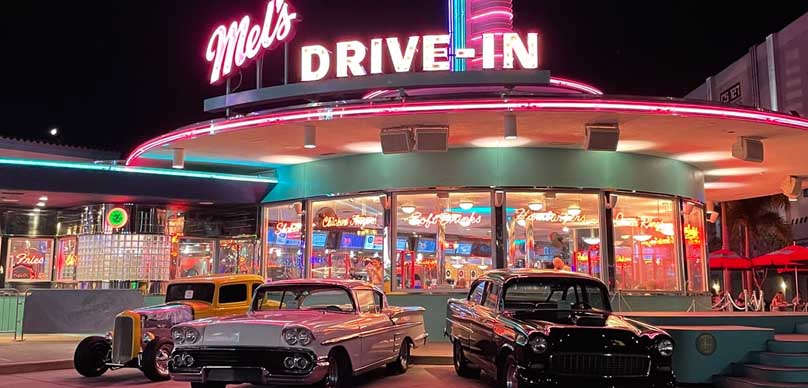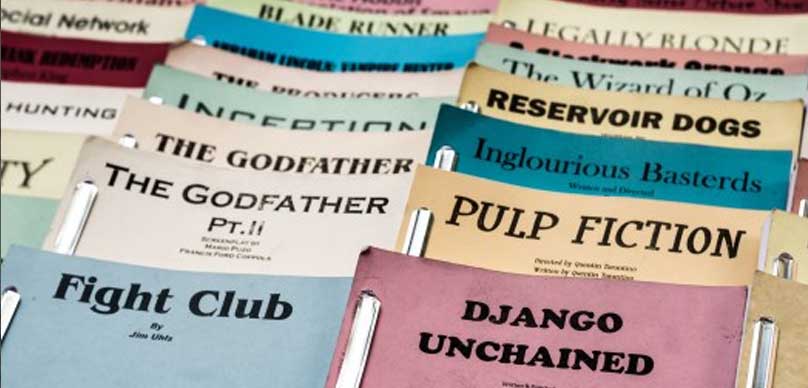Okay so, I like to use cheeseburgers as metaphors a lot so stick with me on this and try not to get peckish. Let’s say you own a portfolio of fast-food restaurants in a major city. You’re doing well for yourself have managed to open a new one every couple of years and you’ve got a few bases covered. You’ve got a taco place, a burger joint, a pizza parlor, and even a sushi bar.
What ties all these places together is each was started with less than a million dollars in investment and they all turned a profit within eighteen months of opening. You may not exactly be Ray Croc, Colonel Sanders, or even Guy Fieri but you’ve got a reputation for delivering and a little empire to call your own.
You get an email one day from an excited individual who has a new restaurant idea they want you to look at. The subject line reads “Johnny Rockets meets Madam Tussauds” and promises a concept that will blow your socks off. You set up a meeting and in walks a bright-eyed individual almost tripping over themselves to tell you why you should build this restaurant and pay them a hefty consultancy fee for their time conceptualizing it.
They ask you to picture a classic 50’s diner serving classic American food but, as the king of flavor town would say “here’s the “kicker”, it fills half the ground floor of the biggest hotel in town and is packed with period nostalgia from waxworks of James Dean and similar era rebels to a full collection of mint condition hot rods and collectible items from the legends of rock and roll. It’s grand, really grand, and they’ve even carefully put together a playlist of hits to listen to while they paint this picture.
It’s a hell of an idea and it’s hard not to get pulled in, after all, you spent your formative years dragging your Plymouth Duster down Main Street pretending you were in American Graffiti and would love to turn the clock back. You ask about food since you know that’s the real reason people will be there.
They boast that this joint will serve the biggest portions people have ever seen yet make McDonald’s look expensive. Looking at the menu, you see how they plan to make that happen by cutting the number of items down to just cheeseburgers, fries, and vanilla milkshakes. “In-n-Out Burger can get away with it!” they joke as if that’s a satisfying explanation.
You raise the point that the majority of fast-food consumers in the city are students in the 15–25 year old demographic and many of those are vegan, so what about meat-free burgers, dairy-free milkshakes, and fries not doused in beef dripping? They scoff at the thought and grumble about the younger people’s “attitude”.
On that topic, you question the appeal of a mid-century themed restaurant to the iPhone generation as a whole, especially when the proposed location would be a twenty-minute trek across town from the local university. Maybe something more contemporary would be a better pull such as a selfie area with waxworks of the Kardasians, some Japanese style tuner cars, and collectibles related to gaming culture.
“Sure” they reply now somewhat despondent “but I wouldn’t eat there”.
You shake hands, wrap the meeting up, and run the numbers. It’s way out of your usual investment range. You’re not even sure if your regular investors have that kind of money. You look at the recipes for the proposed menu and see that the burgers are made cost-effective by being bulked out with rusk to the point they taste like cardboard.
The car collection, which you’ve been told is a dealbreaker, demands a genuine Shelby GT500, and the rock and roll nostalgia is heavily focused on Elvis, going into excruciating detail as to what would be on show while brushing over the topics such as the kitchen facilities and seating layout.
As for a marketing plan, there is no marketing plan, unless you count the line of text claiming word of mouth will make it go viral until the food critics fall in love with the place. It becomes increasingly obvious that they have no experience in the restaurant business and little to no education in it either. Their knowledge seems entirely gained by occasionally going out to eat. To conclude, their proposal is for nasty food in an expensive setting which is out of touch with today’s consumer and disregards the day-to-day realities of keeping a restaurant running.
You email them with an explanation as to why you’re passing and won’t be giving them a six-figure cheque.
“Maybe if it was smaller and more of a gourmet experience”,
you suggest not wanting to close the door forever but you never get a reply. The only time you hear of the concept again is at the next chamber of commerce meeting, where three other restaurant owners and a car dealer reveal they’ve been presented with the same pitch. It turns out the eager amateur emailed everyone in the chamber’s directory and are still out there trying to make their dream come true with the added bitterness they now believe Planet Hollywood stole their idea.
RIPPLE DISSOLVE TO: OUR REALITY
It sounds ridiculous but that’s how to script submissions can feel when they’re read through by a producer. Not only are they completely outside the industry member’s scope in terms of budget, but they are also a poor execution of a tired concept that ignores the current climate of the marketplace. They are not a viable proposition when it comes to doing business and, like it or not, businesses generally want to make a profit.
That’s a hard truth I had to accept in the build-up to Christmas this past winter. It was one of the darkest nights of my screenwriting life. My screenplay “For Your Dreams”, a Thelma & Louise meets True Romance type affair, was on the verge of selling. I couldn’t have been more excited. Then, at the eleventh hour, I got the call.
The producer had consulted their brain trust and the drug mule element of the screenplay was a big problem on top of the issue of it being a dirt movie, to begin with. The investor rightfully needed a home run, not something too edgy. Knowing that softening the script would be like taking the eggs out of the omelet, I pulled the sale and lay awake all night in a fit of despair. Don’t feel too bad for me though. I got an assignment out of it and turned in something a little similar with far more mainstream appeal. Silver linings and all that jazz.
However, as a fan of writing low-budget pulpy material, I did have to come to terms with the fact my entire spec portfolio, which I’ve been putting together over the past eight years, may have little commercial value because of its nature. That stings. I’ve got directors who tell me they would cut off vital parts of their anatomy to shoot scenes I’ve written but feel their sales agent would spit in their eye if they handed over a film that feels like a cult video classic from the early nineties.
“Write what you want to see,”
they tell you but my trusty Grindhouse messenger bag and binge sessions on Tubi give away just what kind of movies I like to watch, ones that rarely make any money in this day and age and appeal to forty-year-old men who rarely leave their home.
But it does highlight something important and, that experience combined with helping co-produce feature films has radically changed my view and my approach to marketing screenplays. We need to respect the demands of the marketplace and the needs of the industry members we approach. As someone who spent twenty years of his life in marketing, it’s almost funny it took me so long to realize this, but then plumber’s taps always leak, right?
Talking of marketing, there’s this model developed by PR Smith in the nineties known as SOSTAC, an acronym to help remember six essential parts of the marketing process; Situation, Objectives, Strategy, Tactics, Actions, and Control.
What makes it powerful is it’s something that’s constantly looping and thus organic in nature. The world is always changing and not only to do with a need to be constantly reassessing our situation, but we also need to be adjusting our course as we move forward. This is how we need to think as screenwriters dreaming of selling specs.
So, why do so many of us present the people who can potentially change our lives with a proposition which is so unsuitable and unworkable and, given that all the craft skills in the world aren’t going to fix the problem, what can we do about it?
Well, business is a topic that rarely comes up in any detail within screenwriting communities. Hell even networking, which is pretty much essential to success, barely gets discussed in any depth. We keep ourselves in the dark because these conversations are scary and, compounding the issue further, very few people can talk about them with experience.
As a result, we resort to a scattergun approach of simply hoping to get read by anyone and homogenize producers and executives in the process. It’s a methodology only once removed from spamming and part of the reason why so many products keep their doors closed to those without representation.
What we can do is to try and think like producers, as ugly as that may sound. Don’t worry though, you don’t need to snort back mountains of cocaine, scream into a mobile phone, or buy a Porsche (sorry, still thinking about True Romance) to get into that mindset. Here are some questions a producer is going to be asking themselves when they read your submission;
Can I actually make this?
Is it even logistically feasible for me to try and turn these words into reality? Sure, we can make changes if we buy the screenplay but has this writer penned something so far away from what I usually make that it would be a leap too far.
Does the screenplay rely heavily on huge action scenes, elaborate effects, or props and locations I’d be terrified of damaging?
Would I need to build sets because they get destroyed in scenes? Does the screenplay expect actors to do things I could never afford insurance for?
How big is the market for this?
Does this target everyone within a niche or try to appeal to the mainstream?
Is it within a genre I know does poorly (looking at you, drama) or a crossover genre that does even more poorly (rolling my eyes at you, western-horror)?
What’s the global appeal like?
Does this screenplay contain content that kills off valuable regions in terms of potential sales?
Is there too much swearing and violence for TV broadcast?
Is the age group it would appeal to a demographic I know how to get in front of?
Will the script attract talent?
Is the prose so compelling people can’t put the screenplay down?
Is there a main character so well developed that known talent is going to want to play them?
What about the antagonist?
What about the supporting roles?
Are there minor characters with a big presence that would suit valuable day players?
Do the scenes give actors something to challenge themselves with and dialogue they will want to be known for saying?
Is that director or cinematographer I always wanted to work with going to jump at the chance to join the project?
How will it gain an audience?
Is the concept something that’s easy to communicate and highly appealing?
Is this something I’d have to run through the festivals in the hope of soliciting critical acclaim?
Is the story so good and the journey so entertaining that people will tell their friends after they’ve seen it?
Is it so radical it will generate cult appeal over time?
Is it an adaption or remake of a property where a pre-existing audience can be leveraged? Does the screenplay contain content that is profound because it’s particularly timely?
Will it make any money?
Given all of the above, what’s the budget and the total potential market value?
Is this a $10m minimum budget production for something likely to only sell for $10k on a streaming platform?
Can it be easily rewritten to change those numbers? Even if the market value outweighs the investment, is it within the remit of my usual financing sources?
Would a PR firm need to be employed to help validate the film on the artistic side of the market? Is there potential there to build a franchise in the future?
What would be the competition?
NOW THAT’S A TASTY BURGER
The break-in screenwriting scene often makes everything about formatting and rules but this pales into insignificance against craft and business acumen. Far more scripts are being rejected by people who can get movies made because they simply don’t see a route to profit than being rejected for adverbs and bold slug-lines. Do we need the experience of Kevin Feige or Kathleen Kennedy to move forward? Absolutely not.
We just need to step outside of our bubble, understand the world of commercial filmmaking a little more, and apply more consideration to who we are approaching with our blueprints.
Hopefully, I’ve made a convincing enough argument that we should keep this all in mind as spec writers and adjust our strategies as best as we see fit. It might be that we actually want to double-down on our niche but with a reduced potential budget while making sure we approach the right producers with something we know they can make.
It might be that we want to take our smaller feeling concepts and make them feel much bigger and more mainstream to maximize the global appeal and put them within the realm of the big studios and top-level producers.
It may be that we want to focus on excellent craft and artistic values knowing that for-profit products outside of the art funding world will most likely be a dead end. Or, it might be a combination of the above with different screenplays tackling different potential opportunities.
Long story short, think about every cheeseburger you ever ate, how much they differed in terms of flavor intensity, nutrition, cost, speed of production, quality of ingredients, and creativeness and how those differences, good or bad, aligned them to your needs as a customer at the time.
That’s what really matters. Not creating in a vacuum, hitting everyone with a scattergun, and hoping for the best but instead identifying what people need and delivering a solution they should find irresistible.
Written by CJ Walley – Screenwriter & Founder of Script Revolution
www.scriptrevolution.com




